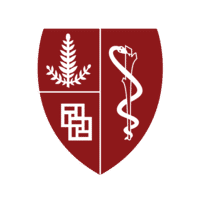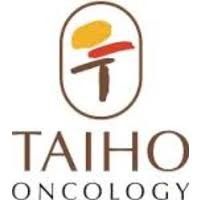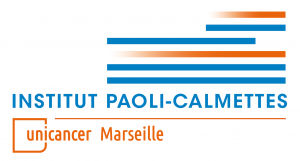Request Demo
Last update 08 May 2025
p70 subfamily x Akt
Last update 08 May 2025
Basic Info
Related Targets |
Related
5
Drugs associated with p70 subfamily x AktMechanism Akt-1 inhibitors [+2] |
Active Org. |
Originator Org. |
Active Indication |
Inactive Indication- |
Drug Highest PhasePhase 1 |
First Approval Ctry. / Loc.- |
First Approval Date20 Jan 1800 |
Mechanism Akt inhibitors [+3] |
Active Org. |
Originator Org. |
Active Indication |
Inactive Indication |
Drug Highest PhasePreclinical |
First Approval Ctry. / Loc.- |
First Approval Date20 Jan 1800 |
Target |
Mechanism Akt inhibitors [+1] |
Active Org. |
Originator Org. |
Active Indication |
Inactive Indication- |
Drug Highest PhasePreclinical |
First Approval Ctry. / Loc.- |
First Approval Date20 Jan 1800 |
6
Clinical Trials associated with p70 subfamily x AktNCT04586270
A Phase 1 Study of TAS0612 in Patients With Locally Advanced or Metastatic Solid Tumors
The purpose of this study is to see if TAS0612 is safe in participants with advanced or metastatic solid tumor cancer.
Start Date15 Oct 2020 |
Sponsor / Collaborator |
NCT01980277
A Prospective, Multicentre, Uncontrolled, Phase Ib/II Study of LY2780301 in Combination With Weekly Paclitaxel in HER2-negative Metastatic or Locally Advanced Breast Cancer in Patients With and Without PI3/AKT/S6 Pathway Activation. - TAKTIC-IPC 2012-008
The overall rationale of this study evaluating tolerance and efficacy of LY2780301 in combination with paclitaxel in HER2-negative, inoperable locally advanced or metastatic breast cancer (MBC) is based on :
the medical need in this population with either hormonal-resistant or unsensitive and/or rapidly progressive disease
the preclinical evidences for involvement of PI3K/AKT pathway in tumor progression and drug resistance, including taxanes as well as its potential reversion by AKT inhibition
the high level of frequency of PI3K/AKT activation in HER2-negative MBC
the in vitro and in vivo preclinical activity of LY2780301, and its synergistic combination with various anticancer agents, including taxanes
the favourable profile of tolerance of LY2780301 in phase I trial
Weekly paclitaxel is conventionally administered at 80 mg/m²/week and is a standard treatment in breast cancer (BC) As described above, LY2780301 500 mg once daily has been established as the RP2D in phase I single agent trial.
Evidence of pharmacodynamic activity was noted at 400-500 mg QD. Conservatively, the first dose level to be explored will be LY2780301 400 mg QD and paclitaxel 70 mg/m²/week.
the medical need in this population with either hormonal-resistant or unsensitive and/or rapidly progressive disease
the preclinical evidences for involvement of PI3K/AKT pathway in tumor progression and drug resistance, including taxanes as well as its potential reversion by AKT inhibition
the high level of frequency of PI3K/AKT activation in HER2-negative MBC
the in vitro and in vivo preclinical activity of LY2780301, and its synergistic combination with various anticancer agents, including taxanes
the favourable profile of tolerance of LY2780301 in phase I trial
Weekly paclitaxel is conventionally administered at 80 mg/m²/week and is a standard treatment in breast cancer (BC) As described above, LY2780301 500 mg once daily has been established as the RP2D in phase I single agent trial.
Evidence of pharmacodynamic activity was noted at 400-500 mg QD. Conservatively, the first dose level to be explored will be LY2780301 400 mg QD and paclitaxel 70 mg/m²/week.
Start Date01 Jan 2014 |
Sponsor / Collaborator |
100 Clinical Results associated with p70 subfamily x Akt
Login to view more data
100 Translational Medicine associated with p70 subfamily x Akt
Login to view more data
0 Patents (Medical) associated with p70 subfamily x Akt
Login to view more data
3,330
Literatures (Medical) associated with p70 subfamily x Akt01 Jul 2025·Phytomedicine
Gouqi-derived Nanovesicles (GqDNVs) promoted MC3T3-E1 cells proliferation and improve fracture healing
Article
Author: Zhou, Xiaolei ; Liu, Liegang ; Nüssler, Andreas K ; Zhang, Zixuan ; Ma, Liang ; Peng, Zhao ; Xia, Hui ; Yang, Wei ; Meng, Zitong ; Xu, Shiyin ; Liao, Yuxiao
01 Jun 2025·Gene
Effect of glucose supplementation on protein biosynthesis in chickens reared under thermoneutral or heat stress environment
Article
Author: Sovi, Selorm ; Ariyo, Oluwatomide W ; Fuller, Alberta L ; Rekaya, Romdhane ; Hartono, Evan ; Milfort, Marie C ; Ghareeb, Ahmed F A ; Kwakye, Josephine ; Aggrey, Samuel E ; Aryal, Bikash
01 Jun 2025·Molecular and Cellular Endocrinology
N-acetylcysteine influence on PI3K/Akt/mTOR and sphingolipid pathways in rats with MASLD induced by HFD: a promising new therapeutic purpose
Article
Author: Michalak, Daniel ; Sztolsztener, Klaudia ; Chabowski, Adrian
3
News (Medical) associated with p70 subfamily x Akt29 Jul 2024
PARIS--(
BUSINESS WIRE
)--Evexta Bio SA, a clinical-stage biotechnology company focused on developing first-in-class therapies in oncology, announces the appointment of Robert Doebele as CMO consultant.
Dr. Doebele's extensive academic background includes a MD and PhD in Immunology from the University of Pennsylvania School of Medicine, residency and fellowship training in Medical Oncology and Internal Medicine at the University of Chicago Pritzker School of Medicine, and a Bachelor of Arts in Molecular Biology from Princeton University.
Throughout his career, Dr. Doebele has made significant contributions to cancer research, focusing on molecular diagnostics, cancer biology, and the development of biomarkers. His previous roles include Associate Clinical Professor at the University of Colorado Anschutz Medical Campus, where he also directed the Thoracic Oncology Research Initiative. Before joining Evexta Bio, Robert was co-founder, Chief Scientific Officer and Chief Medical Officer of Rain Oncology.
As CMO consultant, Robert will support the Company’s clinical development strategy, provide expert advice for protocols, processes and rupitasertib clinical plans and participate in scientific advisory committees.
Scott Filosi, CEO of Evexta Bio said:
“
I am delighted to welcome Robert as CMO consultant. We are confident that Robert’s expertise will greatly enhance our ongoing efforts in advancing clinical research and improving patient outcomes.”
About Evexta Bio (
https://www.evextabio.com
)
Evexta Bio is a biopharmaceutical company exploring the new frontiers of oncology in search of daring novel therapeutic approaches with the potential to save lives. Now, in the clinic, the company is currently developing two proprietary therapeutic assets with novel mechanisms of action across several indications:
Rupitasertib, an optimized S6K inhibitor with efficient AKT1/AKT3 control of compensatory AKT feed-back loop. The oral anti-tumor agent is expected to enter phase 2 clinical trial in
ESR1
mt ER+ HER2- advanced breast cancer.
EVX020, a sole-in-class KIF20A kinesin inhibitor having shown potent nonclinical efficacy in hematological and solid tumor models. Two strategies are under assessment, development of EVX020 as a prodrug and as a payload for antibody-drug conjugate (ADC).
Founded by Truffle Capital, supported by Merck KGaA (Darmstadt, Germany) as shareholder, Evexta Bio has forged alliances with leaders in academia and industry, including CNRS, Paoli-Calmettes Institute (Marseille, France) and Merck KGaA. The company is supported by seasoned management team, board of directors and medical advisory board.
Executive ChangeADCPhase 2
22 Apr 2024
Evexta Bio Reports Progress towards Clinical Development of Rupitasertib in Advanced Breast Cancer
Feedback from FDA following Type B meeting enables Evexta Bio to move forward in clinical development of rupitasertib in advanced breast cancer (ABC)
Phase 2 clinical trial on track to start in Q4 2024
New preclinical efficacy data strengthen rationale to develop rupitasertib, in combination with elacestrant, in ESR1mt ER+ HER2- ABC
Evexta Bio to present at 10th LSX World Congress taking place in London, April 29-30, 2024
Paris, France, April 22, 2024 - Evexta Bio SA, a clinical-stage biotechnology company focused on developing first-in-class therapies in oncology, today provided an update on the clinical development of its lead asset, rupitasertib, a selective oral inhibitor of S6K and AKT1/AKT3.
Following a Type B meeting held on March 13, 2024, the U.S. Food and Drug Administration (FDA) provided Evexta Bio with valuable input on various aspects of rupitasertib development, including CMC, preclinical and clinical topics, enabling the company to proceed with the Phase 2 study in advanced breast cancer.
The Phase 2 trial is expected to start enrolling patients in Q4/2024. This Phase 2, open label study will evaluate the safety and efficacy of rupitasertib + elacestrant (ORSERDU®) in patients with ER+1 HER2-2 advanced breast cancer with detectable mutation/s of the estrogen receptor 1 gene (ESR1mt).
Rupitasertib is a selective oral inhibitor of S6K and AKT1/AKT3 designed to efficiently block the PI3K/AKT/mTOR (PAM) pathway while controlling the compensatory AKT feedback loop. In a Phase 1 trial (Tsimberidou et al 2021) involving heavily pretreated patients with various solid tumors, including those with ESR1mt, rupitasertib was shown to have a favorable safety pro with preliminary signs of efficacy.
Recent preclinical studies in ESR1mt breast cancer models have shown compelling synergistic effects of rupitasertib administered in combination with elacestrant. These data support the preliminary clinical efficacy observed in the Phase 1 study and warrant the development of rupitasertib in ESR1mt ER+ HER2- advanced breast cancer patients.
Scott Filosi, CEO of Evexta Bio,said: "The feedback we have received from the FDA on the clinical development plan for rupitasertib, along with the new preclinical efficacy data generated in estrogen-resistant breast cancer models, is enabling us to move forward with strong confidence to initiate our Phase 2 study. Advanced breast cancer patients with ESR1 mutations who progressed on or after a CDK4/6 inhibitor have limited treatment options, and our goal is to provide them with an effective and well-tolerated therapy choice.”
Dominique Bridon, CSO of Evexta Bio,added: “Patients with ER+ HER2- breast cancer often develop resistance to first-line treatment with the acquisition of ESR1 mutations, and the prognosis for these patients is poor. In addition, S6K has been shown to be closely associated with the emergence of cancer resistance, particularly in breast cancer, through ER modulation. Rupitasertib, which inhibits S6K while controlling the AKT compensatory feedback loop, could be a major advance to better treat these patients who are in need of alternative therapies.”
Upcoming meeting
Evexta Bio will present at the LSX World Congress in London, April 29-30, 2024.
*****
About Evexta Bio ( )
EvextaBio is a clinical-stage biopharmaceutical company exploring the new frontiers of oncology in search of daring novel therapeutic approaches with the potential to save lives. The company is currently developing two proprietary therapeutic assets with novel mechanisms of action across several indications:
Rupitasertib, an optimized S6K inhibitor with efficient AKT1/AKT3 control of the compensatory AKT feedback loop. The oral anti-tumor agent is expected to enter a Phase 2 clinical trial in ESR1mt ER+ HER2- advanced breast cancer later in 2024.
EVX020, a sole-in-class KIF20A kinesin inhibitor that has shown potent preclinical efficacy in hematological and solid tumor models. Two strategies are under assessment - development of EVX020 as a prodrug and as an antibody-drug conjugate (ADC) payload.
Founded by Truffle Capital and supported by Merck KGaA (Darmstadt, Germany) as a shareholder, Evexta Bio has forged alliances with leaders in academia and industry, including CNRS, Paoli-Calmettes Institute (Marseille, France) and Merck KGaA. The company is supported by a seasoned management team, board of directors and medical advisory board.
Contact
ATCG PARTNERS
Marie Puvieux
+33 (0)6 10 54 36 72
presse@atcg-partners.com
1 Estrogen Receptor-positive.
2 Human Epidermal growth factor Receptor 2 negative.
Attachment
PR in English
Phase 1Phase 2
04 Jan 2024
Evexta Bio Announces the Appointment of Paul Gineste, PharmD, as Chief Development Officer Paul Gineste brings 25 years of experience in clinical development and strategy with leading international pharmaceutical and biotech companies.Recently, Paul served as Vice President, Clinical Operations at Abivax, where he led the development of drug candidates from discovery through global Phase 3 programs. Paris, France, January 4, 2024 - Evexta Bio SA, a clinical-stage biotechnology company focused on developing first-in-class therapies in oncology, announces the appointment of Paul Gineste as Chief Development Officer (CDO), effective January 1, 2024. Paul is an experienced senior executive with a track record of successful achievements in the Pharma and Biotech Industry. He has worked with leading international pharmaceutical and biotech companies, including as International Clinical Trials Manager at Boehringer Ingelheim, Head of Clinical Research and Development at Altana Pharma, Executive Vice President, Clinical Development at Theravectys, a lentiviral vector spin-off from the Institut Pasteur, and most recently for 9 years as Vice President, Clinical Operations at Abivax, where he led drug candidates from discovery through global Phase 3 programs. Scott Filosi, CEO of Evexta Bio, said: "I am delighted to welcome Paul as the new Chief Development Officer of Evexta Bio. With his extensive track record in the pharmaceutical and biotech industries, Paul is the best suited to lead our clinical development and strategy as our lead candidate, rupitasertib, is expected to enter a phase 2/3 clinical trial in refractory ER+ HER2 metastatic breast cancer.” Paul Gineste, PharmD, CDO of Evexta Bio, added: “I am genuinely pleased to join Evexta Bio and its experienced management team to advance its development strategy and in particular its clinical programs. Evexta Bio has two proprietary therapeutic assets with original mechanisms of action that may address unmet medical needs in multiple cancer indications. I look forward to leading and accelerating their clinical development.” ***** Upcoming opportunity to meet our team: EVEXTA BIO will be in San Francisco, CA, during the JP Morgan's 42nd Annual Healthcare Conference, January 8-11, 2024. Contact us today to arrange a meeting with our executives in San Francisco: Scott Filosi, Chief Executive Officer, and Dominique Bridon, Chief Scientific Officer. About Evexta Bio (https://www.evextabio.com) Evexta Bio, formerly Diaccurate, is a biopharmaceutical company revolutionizing cancer treatment with potential first-in-class therapies with unique mechanisms of action for combating tumor resistance . Now in the clinic, the French biotech is currently developing two proprietary therapeutic assets across several indications: Rupitasertib, formerly DIACC3010, a first-in-class S6K inhibitor addressing tumor resistance while blocking the compensatory AKT feedback loop. The oral anti-tumor agent is expected to enter phase 2/3 clinical trial in refractory ER+ HER2- metastatic breast cancer. EVX-020, formerly DIACC2020, an antibody-drug conjugate program using a first-in-class KIF20A kinesin inhibitor as payload in hematological and solid tumors. Founded by Truffle Capital, Evexta Bio has forged alliances with leaders in academia and industry, including CNRS, Paoli-Calmettes Institute (Marseille, France) and Merck KGaA (Darmstadt, Germany). The company is supported by seasoned management team, board of directors and medical advisory board. Contacts ATCG PARTNERSMarie Puvieux+33 (0)6 10 54 36 72presse@atcg-partners.com
Attachment
PR in English
Executive Change
Analysis
Perform a panoramic analysis of this field.
login
or

AI Agents Built for Biopharma Breakthroughs
Accelerate discovery. Empower decisions. Transform outcomes.
Get started for free today!
Accelerate Strategic R&D decision making with Synapse, PatSnap’s AI-powered Connected Innovation Intelligence Platform Built for Life Sciences Professionals.
Start your data trial now!
Synapse data is also accessible to external entities via APIs or data packages. Empower better decisions with the latest in pharmaceutical intelligence.
Bio
Bio Sequences Search & Analysis
Sign up for free
Chemical
Chemical Structures Search & Analysis
Sign up for free




